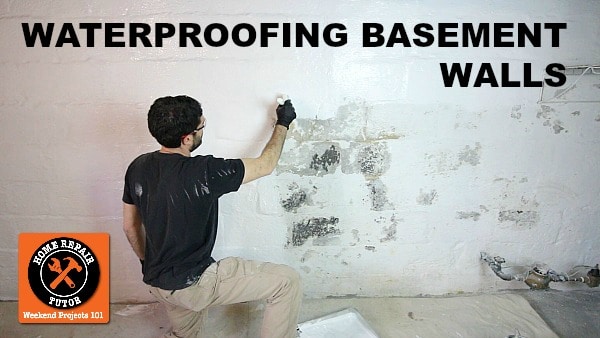Waterproofing basement walls with DRYLOK® paint is pretty darn easy.
Recently I had to remodel one of my rental homes. And I was teetering with the idea of not touching the basement.
But it became clear that the basement walls were a nightmare.
So I decided to paint them with DRYLOK® and share that project with you today…just in case you’re in the same predicament!
Let’s dive in.
I’ll add a supply list at the end of this tutorial.
That way you can check out all the materials I used for this project.
DRYLOK® partnered with me on this tutorial but I was going to use their paint anyway.
Step 1: Inspect Both Inside and Outside
I’ll say this right now: I’m not a basement waterproofing expert.
Okay, got that off my chest.
But I do know you should
- Clean gutters and downspouts at least twice a year
- Downspouts should extend at least 3 to 4 feat away from the foundation
- And the yard should slope away from the house if possible
The house I’m working on has the gutters and downspouts cleaned twice a year.
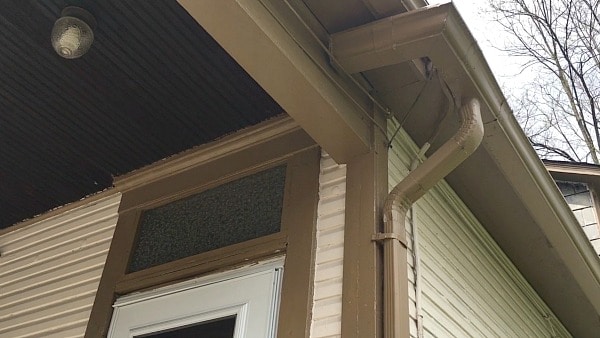
Check.
The downspouts work properly and extend away from the foundation.
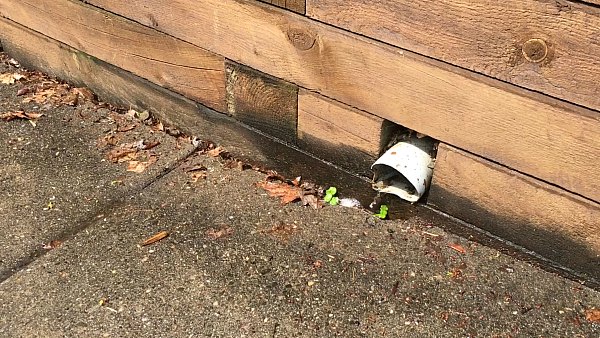
Check.
And the yard is what it is – this house is landlocked by the neighbors.
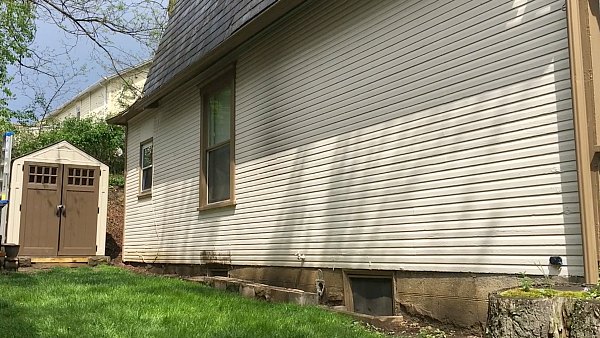
Side Note: as I was painting the walls in the basement I noticed our neighbors had their downspout facing my foundation. Yep, that’s an issue and I’m sure they’ll fix it – they’re great people. But that explains some of the moisture in the basement.
Another issue with this home is that it’s over 100 years old. The walls are constantly moist and some of the old paint was pealing.
As a result, I had to prep the walls before applying the DRYLOK®.
Step 2: Prep Basement Walls for DRYLOK Paint
My basement walls looked terrible.
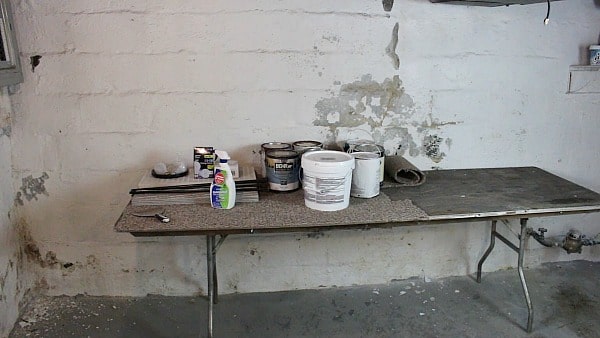
Some areas had pealing paint and cracks.
I used a 6 inch drywall knife to remove the old pealing paint.
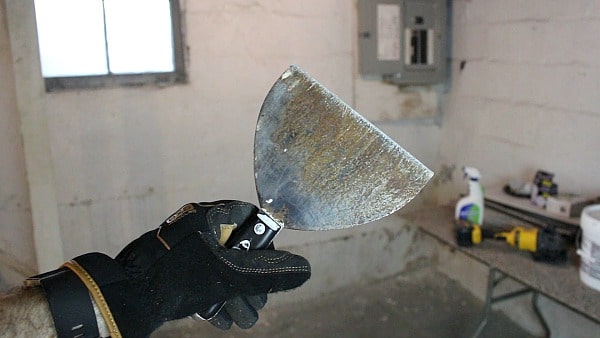
And an angle grinder with a Sawtec blade to knockdown any high spots. My goal was to make the walls as smooth as possible.
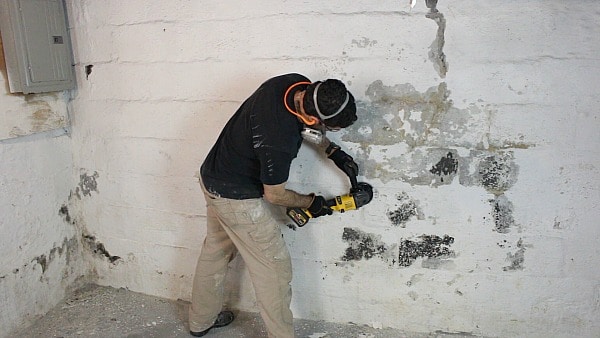
Once that was done I brushed off the walls with a broom to remove excess dust.
Then I filled cracks and holes using UGL’s hydraulic cement.

Mix three parts powder to one part water and stir well with a putty knife. You’ll have a pliable cement mixture that sets up in 3 to 5 minutes.
Cut a ‘V’ notch in cracks or holes to ensure the hydraulic cement will adhere properly. Use a hammer and chisel for that.
I love hydraulic cement because it works fast and is simple to use. It’s a great way to prevent water from trickling into the basement.
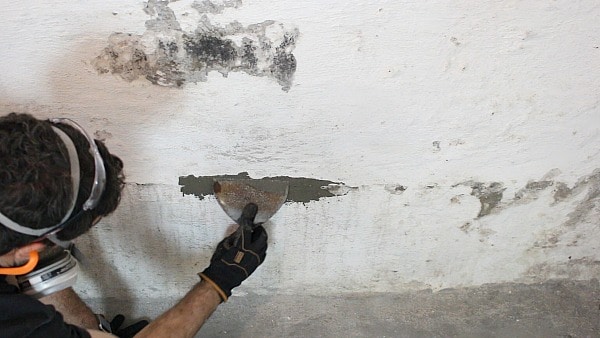
I added extra tips in the video in regard to the Fast Plug, and show how to handle mildew with Concrobium.
Efflorescence should be removed with muriatic acid, but have good air circulation as this is potent stuff.
Step 3: Safety Precautions – Don’t Blow Up the House
Some people will think I’m crazy but it’s best to be safe when working with paint in a confined space.
Open windows to allow fresh air in and out of the basement.
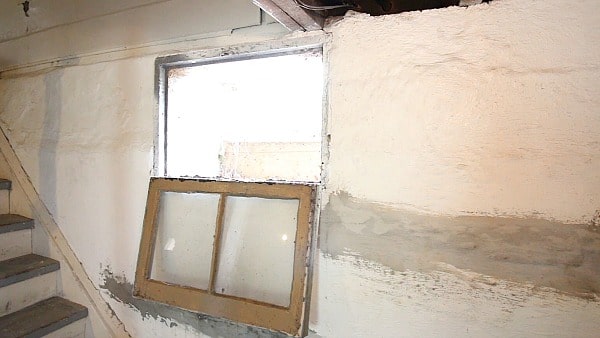
Turn off the gas to the furnace,
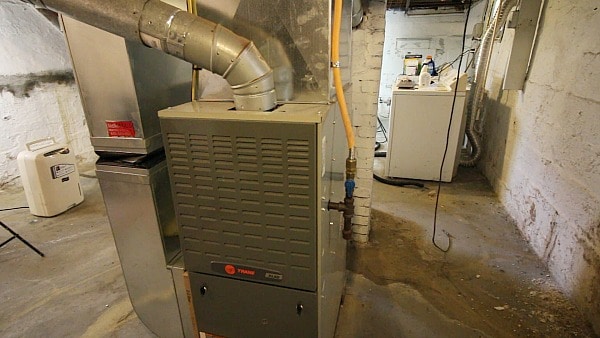
Hot water tank,
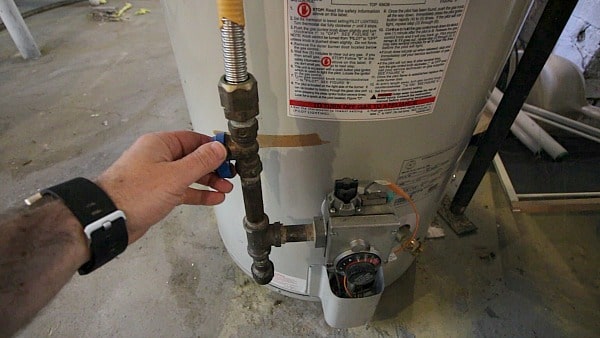
and gas dryer if you have one or at a minimum don’t use the dryer while painting.

These are safety precautions because of the paint fumes.
Okay, let me know if I’m crazy or you’re just as anal retentive.
Step 4: Waterproofing Basement Walls with DRYLOK Paint
DRYLOK® can be applied to walls with a brush, roller, or paint sprayer.
I toyed with the idea of using a paint sprayer but decided against it. Simply because I had the brushes and there were areas in this basement where a brush was better.
UGL (they make DRYLOK®) has brushes.

But any standard brush for latex paint will work.
Waterproofing basement walls with DRYLOK paint can be done with a 3/4″ nap roller, I got a 1 3/4″ nap roller because the walls were very bumpy in spots.
The DRYLOK® I used for this project was DRYLOK® Extreme.
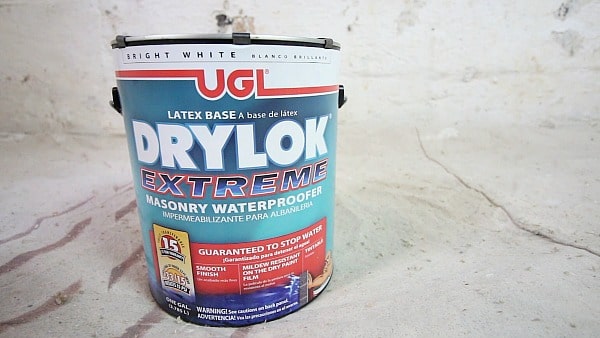
Stir DRYLOK® very well, pour some paint in a metal tray, and start at the top of each wall. I applied the DRYLOK® across 3 feet of the wall then worked downward.
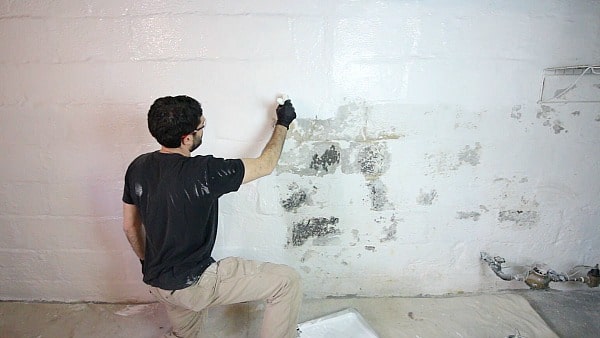
I moved left to right and applied enough paint to cover any bare spots.
Back brushing minimized drips and runs. The drop cloth saved my butt a few times when I got a little messy with the paint. I’m not the cleanest painter :/
Always wear protection when prepping or painting walls. My 3M respirator is seriously the best investment I’ve made for my lungs (well that, and not smoking two packs a day!).
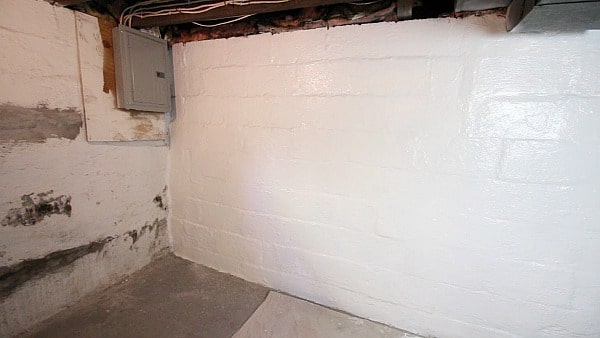
Even though I used a brush, it didn’t take long to paint a wall – maybe 45 minutes.
In the video I said it took 60 minutes but that was an overestimate.
Watch my video tutorial to see the full effect of the DRYLOK® and how it made our basement walls way better.
The Supply List
These are all the supplies I used for my project
- 6 inch Drywall Knife ($7) http://amzn.to/2pFEJkp
- Venom Gloves (100 Count for $19) http://amzn.to/2parV48
- DeWALT Angle Grinder (corded) ($124) http://amzn.to/2oS3upE
- Sawtec Abrasive Grinding Disc ($7)
- Concrobium ($12) http://amzn.to/2oQWWH5
- 3M Respirator ($19)
- Earplugs ($7) http://amzn.to/2qdKtit
- Safety Glasses ($5) http://amzn.to/2pFsNiI
- Drop Cloth ($12)
- Extreme Paint by DRYLOK ($45 per gal)
- DRYLOK® Fast Plug ($17)
- DRYLOK® Paint Brush ($14) http://amzn.to/2paGrss
- Metal Tray ($4) http://amzn.to/2paC1lK
The above links go to either Amazon or Home Depot. I tried to find the cheapest prices for each item. Hope that helps.
What’s Next
There you go, waterproofing basement walls with DRYLOK paint is pretty easy.
You can check out DRYLOK® by clicking this link.
They make a variety of different products for the home. I bet you’d be surprised.
It made a huge difference in the basements smell and appearance. I’ll have to do a follow up video or post in a year to see how the DRYLOK® holds up.
If you’re doing a bathroom remodel and need help, join one of our online courses – they’ll make your bathroom renovation much easier!
Let me know if you have any questions and I’ll do my best to help.
Thanks for reading, watching, and being part of our DIY community.
Cheers,
Jeff



